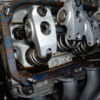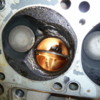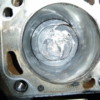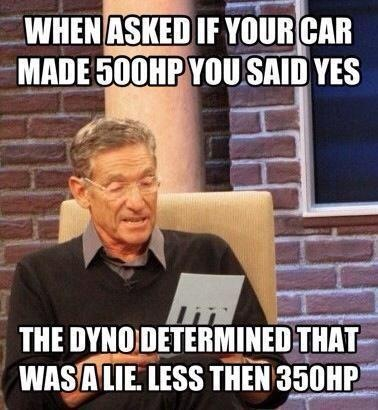quote:
Originally posted by 1Rocketship:
I would be Extremely curious if your engine is still building horsepower beyond 7,200 RPMS!...Mark
The Yates heads typically continue to make power to the limit of the engines rpm capabilities. Definitely to at least 8,200 but that is the practical limit (for me).
You need to reduce valve train inertia to reduce spring pressure requirements.
The roller lifters add to it as do the large Cleveland valves.
Titanium valves help but don't have the same longevity of the stainless/chrome valves. I actually would not be shocked to find titanium valves in this assembly?
Hydraulic roller lifers have been in use for some time in OHV updated Chevys and Fords but for emmissions reasons and typically aren't set up for much over 6500 or 6600 rpms if even that?
Over head cam engines don't need to worry about these issues any more.
There are other issues too with the need for 3/8" push rods vs 5/16. Adds inertia. Incidentally, so does 40 weight oil.
I don't know if there is enough documentation around by ANYONE that will give an accurate guide on exactly how solid roller lifter valve trains can relate to zero maintenance and actual mileage projections for zero maintenance? If there is, show me, I want to read that?
Everything I am seeing is that they just require almost constant maintenance on them just like a Pro Stock drag race car does, virtually after every run.
Granted Pro Stocks are leaving the line in the 9,000 rpm area and this engine isn't. How that translates into less maintenance I don't think ANYONE can explain adequately?
A much simpler solution is to switch to a lower maintenance set up, but I suppose that happens more so involuntarily than any other way?
As far as the Yates heads practicality? Well. My A3 heads (the Yates heads are a later evolution of the Ford aluminum race heads started as replacements for the iron Cleveland and Boss 302 heads) flow on the intake 330 cfm at .630 lift.
The Yates heads, about 380 at the same lift.
If you cross reference that flow to the ability of 357 cubic inches to pump that, the engine is in the 10,000 rpm range in order to use it.
The flow graph is almost a perfect straight line as far as flow vs. lift. Theoretically you can just pick your spot where you want to limit it to with cam lift and you are done.
Well sort of. The Yates heads intake ports in particular are not just big holes in an aluminum casting, their forte is getting the flow by accelerated air velocity through the ports. Cutting the lift also CAN cut the velocity through the port. That change isn't necessarily going to be a straight line curve? That means the Yates head works better at very high lifts, very high velocities, probably much better than an iron head would at lower lifts but only a percentage of flow that you would think it should?
Iron heads have been shown (by Dan Jones) that with a nice valve job flow right around 300 cfm (298 is what Dan's flow bench showed). That's a very nice number for a street engine. He didn't mention velocity with them though.
So really the answer with those Yates heads is that yes they really do make actually 700 to 750 hp out of 357 cu in but at race lifts and rpms. The horsepower curve is pretty much a straight line straight up into the stratosphere.
Turning the engine to 8,200 rpms is VERY DIFFICULT to resist doing. The engine makes such wonderful sounds!
The profile of the camshaft that MTS has in the engine, simply put, compliments those heads.
On a street engine, a different head might be a better consideration? Maybe?
Anyway, those heads definitely do make the power and that and a $15 toll will get you over the Verrizonos Narrows Bridge into Staten Island. Look out for the pot holes. They are free.
Well actually it's free to get into Staten Island. You have to pay to get out.













